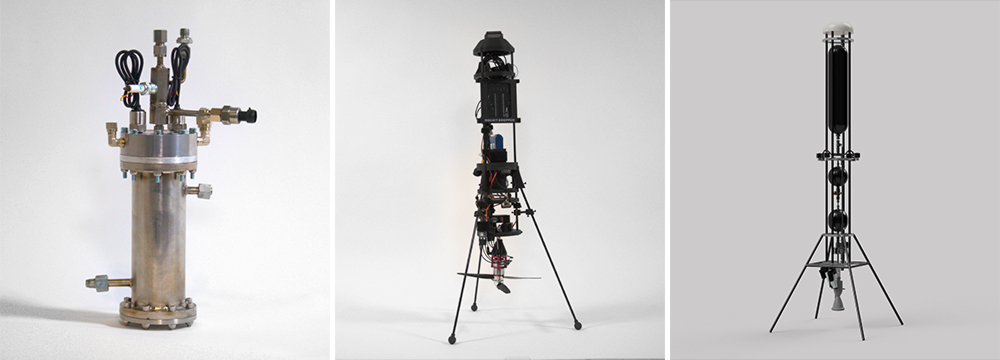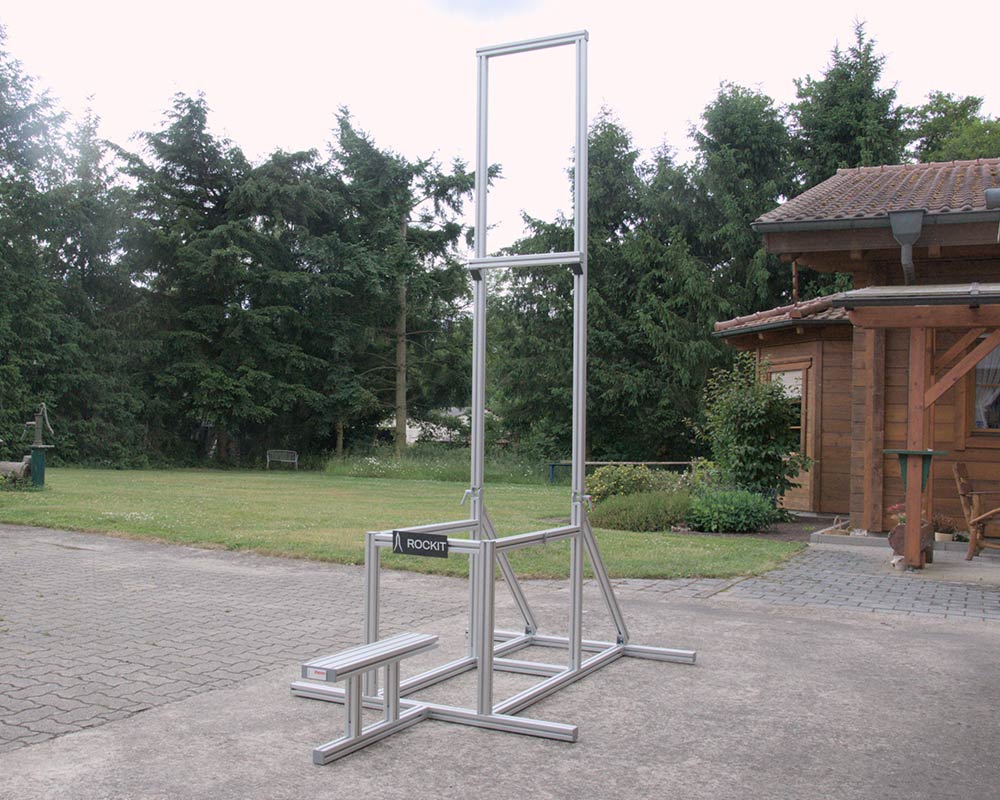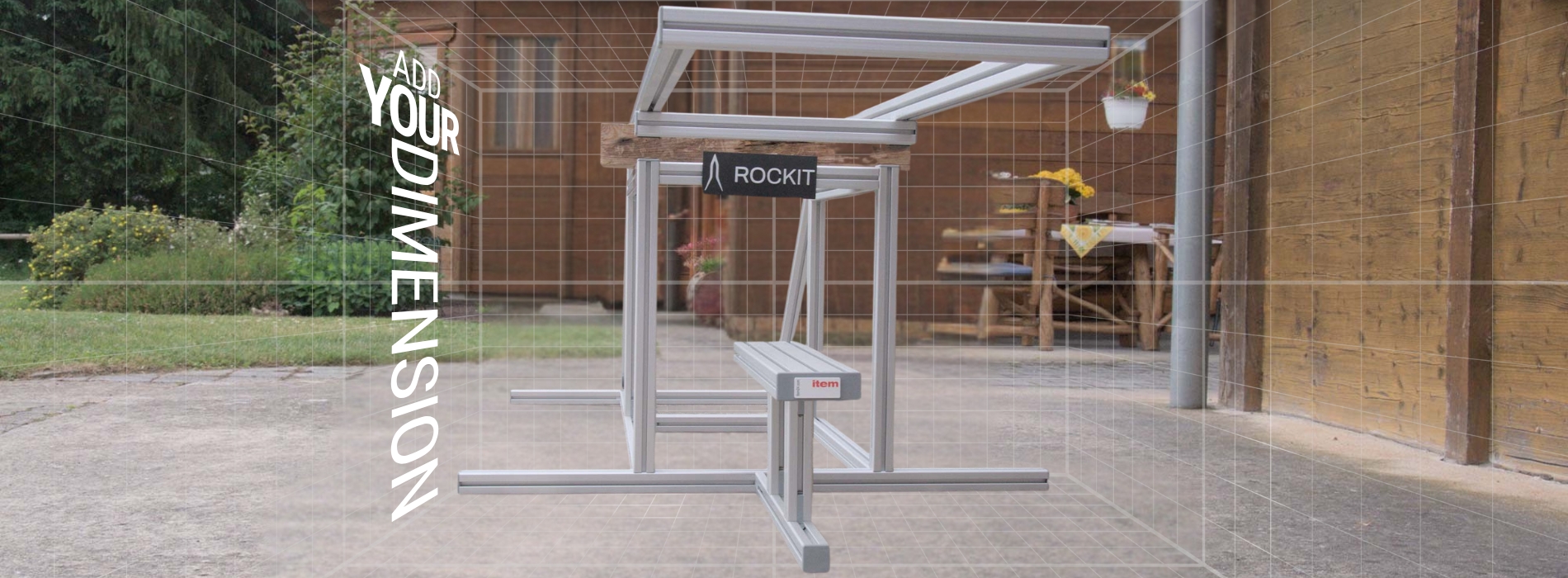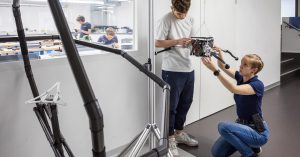Gigantic dimensions, nail-biting tension and global attention – the launch of a space rocket is spellbinding.
A few years ago, watching videos of these launches gave Moritz Schütz a big thrill, and he’s been obsessed by rockets ever since. He started by joining like-minded people to build small rockets in private ventures. At the beginning of 2025, and now studying for a master’s degree in mechatronics and information technology at the Karlsruhe Institute of Technology (KIT), Schütz initiated a university group called “ROCKIT”, a cheeky play on the word “rocket” and the KIT. The roughly 30-strong team of students want to build a self-landing rocket, complete with its very own engine. They are planning autonomous flights lasting 30 seconds. Powered by ethanol and nitrous oxide, the rocket engine can lift around 40 kilos. If possible, the members of the team want to develop and make all the components for the project themselves. ROCKIT’s test bench to try out the engine is based on the modular profile technology of our item Building Kit System.
Numerous challenging steps on the way to the ultimate goal
The team is currently testing a number of key technologies. The rocket’s control technology is being developed based on experience from a small testbed drone. The control aspect is actually one of the biggest challenges in the entire project. “A self-landing rocket has to stabilise itself in order for the whole thing to work. It’s a bit like trying to balance a pen on your hand. We’re using our drone to test the electronics and algorithms. This experience will come in later when we’re building the rocket,” explains Schütz. The drone is called “Dropper”, has contra-rotating propellers and is designed for rapid iterations, meaning it is being further improved step by step. Indeed, gaining practical experience is a key aspect of ROCKIT.
Gaining practical experience is a key aspect of ROCKIT.
The engine, called “GOxilla”, is also built for rapid testing. It is envisaged that a future engine architecture will benefit from regenerative cooling. At the test bench, the engine is supplied with nitrous oxide and ethanol via tubing, while sensors measure data such as pressure, temperature and mass flow rate. The final step will be to develop “Hopper”, the actual self-landing rocket, which will complete short hops at low altitude. The students definitely aren’t aiming to break any altitude records. Instead, they want the 25-kilo rocket to demonstrate controlled flight and landing capabilities. The team is working towards its ultimate goal – the first free rocket launch is scheduled to take place in summer 2027.

Modular test bench for maximum flexibility
The ROCKIT team started off with a non-modular test bench. This had one key drawback – replacing components was very difficult, which represented an obstacle to the iterative approach. It therefore became clear that a modular test structure was needed, and the team didn’t take long to decide on item. “I’m a student trainee at a company that uses item solutions in its test benches – and item is, after all, a well-known name in the industry. We can now make our test bench amazingly modular and flexible,” says Schütz. The new test bench is around two metres long and one metre wide. It has been specially designed to fold up quickly so it can be transported in a car. The test bench owes its exceptional flexibility to our hinges.
The more I used the Engineeringtool, the more impressed I was. It made the design process very enjoyable and saved time.
Schütz used the item Engineeringtool to design the test bench. “I was accustomed to creating everything in a CAD software program, but the more I used the tool, the more impressed I was. The item Engineeringtool made the design process very enjoyable and saved time,” Schütz reveals. There were a total of around 12 design iterations. Making the changes was really easy using the free online tool. The automatically generated project documentation and the supply of profiles already cut to the desired length saved the team valuable time. Schütz also has nothing but positive things to say about the other aspects of working with item. “The customer support was exceptional. We got a rapid response to all our questions. We’re very grateful for that and for everything else,” he emphasises.

Do you want to keep up to date on the various ways that item products are being put to use? Then we have just what you’re looking for! Simply subscribe to the item blog by completing the box at the top right.







